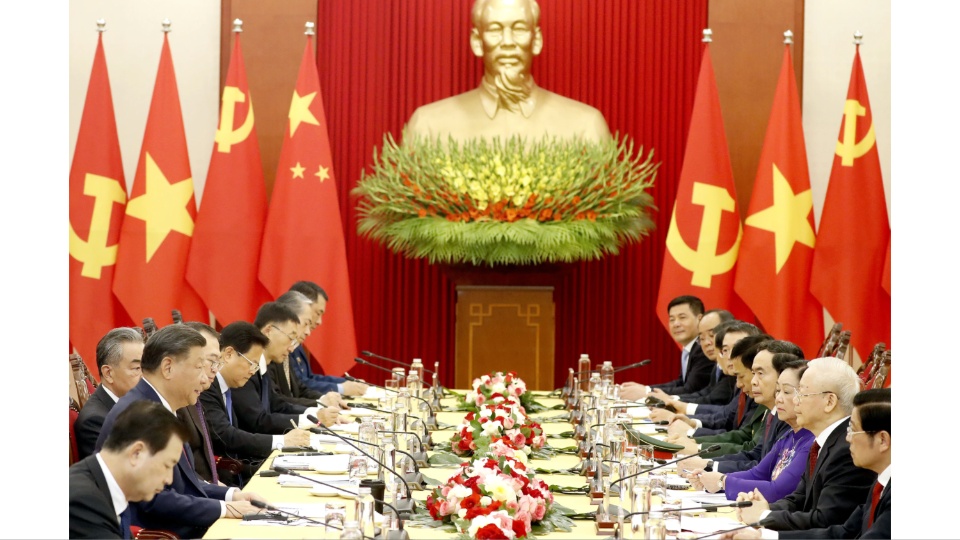
HANOI— In September, when Vietnam and the U.S. upgraded their relationship to the level of a “comprehensive strategic partnership,” many Western analysts and media commentators declared that this meant Vietnam was being pulled into the U.S.’ diplomatic sphere of influence and joining its anti-China coalition.
But if the just-concluded two-day visit to Hanoi by Chinese President Xi Jinping is any indicator, the claims of a China-Vietnam rift appear to be incredibly wrong.
Xi, who is also General Secretary of the Communist Party of China, was the guest of Communist Party of Vietnam General Secretary Nguyen Phu Trong and Vietnamese President Vo Van Thuong.
During the meeting, the three leaders re-affirmed the deep friendship between their two countries and oversaw the signing of more than 30 agreements covering fields ranging from defense, trade, and supporting each other’s path to socialism to infrastructure development, public security, and joint maritime patrols of the Gulf of Tonkin.
Significantly, among the many documents signed was a plan for further cooperation on China’s “Belt and Road Initiative,” as well as the “Two Corridors, One Belt” program. While these two Chinese trade and cooperation initiatives are often slandered in Western media, they are major infrastructure investment programs that have helped developing countries around the world speed up their modernization processes. With the Vietnamese government’s plans to invest in a cross-country high-speed rail line, these Chinese programs may prove to be crucially important.
At the end of Xi’s visit, the two governments issued a joint statement emphasizing the close relationship and the shared socialist path of Vietnam and China.
Emphasizing the countries’ “close bonds as both comrades and brothers” the statement declared an intention to “further elevate the Vietnam-China Comprehensive Strategic Cooperative Partnership” and build a “Vietnam-China Community.”
The leaders said that the relationship between their nations was moving to a new stage “with stronger political trust, more substantial defense-security cooperation, deeper tangible collaboration…closer multilateral coordination, better management and settlement of differences, and joint efforts for boosting the development of the world socialist cause, making positive contributions to the cause of peace and progress of mankind.”
The agreement could also help stabilize tensions in the South China Sea (referred to as the East Sea in Vietnam). The U.S. and its allies have repeatedly attempted to use any signs of instability in this area to expand their military presence in the region. In fact, the U.S. permanently keeps a large naval force in the South China Sea, despite it being thousands of miles away from U.S. territory.
Though Xi’s visit to Hanoi is getting scant coverage in the U.S. media, it could go a long way toward dispelling the often repeated (and frequently debunked) Western talking points about deep Chinese-Vietnamese divisions—among those paying attention.
We hope you appreciated this article. At People’s World, we believe news and information should be free and accessible to all, but we need your help. Our journalism is free of corporate influence and paywalls because we are totally reader-supported. Only you, our readers and supporters, make this possible. If you enjoy reading People’s World and the stories we bring you, please support our work by donating or becoming a monthly sustainer today. Thank you!










